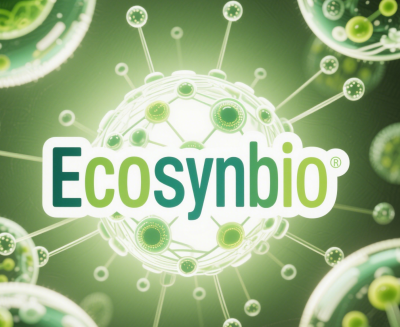
ECOSynBio (Energy and Carbon Optimized Synthesis for the Bioeconomy) is an innovative initiative launched in 2020 by the U.S. Department of Energy’s Advanced Research Projects Agency-Energy (ARPA-E). It aims to redefine biomanufacturing through synthetic biology and bioengineering to achieve efficient carbon utilization and sustainable energy conversion. The core objective is to transform carbon sources like CO₂ from environmental liabilities into industrial resources, driving the bioeconomy toward carbon neutrality and circularity.
Core Definition and Technical Scope
- Literal Meaning:
ECOSynBio stands for Energy and Carbon Optimized Synthesis, emphasizing the optimization of carbon flow and energy efficiency through engineered biological systems to replace high-emission industrial or fermentation processes. - Technical Essence:
- Closed-Loop Carbon Cycling: Convert industrial CO₂ emissions and agricultural waste into fuels, chemicals, or materials (e.g., plastics, pharmaceutical precursors).
- Renewable Energy Integration: Use renewable electricity (e.g., wind, solar) to drive bioconversion processes, such as electrocatalytic hydrogen (H₂) production or NADPH regeneration, enhancing microbial carbon fixation.
Technical Pathways and Innovations
ECOSynBio’s R&D focuses on three key areas:
- Carbon-Optimized Bioconversion Platforms:
- Strain Engineering: Design microbial strains (e.g., E. coli, yeast) with metabolic pathways to prevent carbon loss as CO₂ during fermentation. For example, Ohio State University developed engineered microbial consortia to produce butanol from lignocellulosic sugars without CO₂ emissions.
- Cell-Free Biocatalysis: Deploy enzyme-based systems (e.g., University of Washington projects) to directly convert CO₂ into chemicals like malic acid.
- Energy-Carbon Synergy Systems:
- Electro-Bio Hybrid Systems: Use renewable electricity to electrochemically reduce CO₂ into intermediates (e.g., formate, methanol), which are then upgraded by microbes into high-value products. For instance, LanzaTech converts steel mill emissions (CO/CO₂) into ethanol and acetone.
- Synthetic Biology Tool Advancements:
- Modular Design: Combine standardized biological parts (BioBricks) with genetic circuits (e.g., dynamic regulatory switches) to enhance system robustness.
- AI-Driven Design: Machine learning predicts metabolic fluxes to optimize strain performance. For example, UC Berkeley developed microbial consortia for complete carbon source utilization.
Applications and Case Studies
- Industrial Decarbonization:
- Steel/Chemical Industries: LanzaTech converts steel mill emissions into ethanol (annual capacity >100,000 tons) and further processes it into aviation fuel.
- Plastic Alternatives: Produce bio-based polyesters (e.g., PEF) from CO₂ to replace petroleum-based PET.
- Sustainable Materials:
- Malic Acid Production: The University of Washington’s cell-free system transforms CO₂ into malic acid for biodegradable plastics and detergents.
- Bio-Nylon: Genomatica engineers microbes to synthesize nylon-6, reducing greenhouse gas emissions by 60% compared to traditional methods.
- Energy and Agriculture:
- Biofuels: Engineered cyanobacteria utilize CO₂ and solar energy to produce butanol directly.
- Carbon-Sequestering Fertilizers: Engineer nitrogen-fixing strains to enhance soil carbon storage.
Challenges and Future Directions
- Core Challenges:
- Energy Efficiency: Electro-bio hybrid systems require balancing energy input and output, with current conversion rates at 30-50%.
- Scalability Costs: Industrial-scale cultivation of synthetic biology strains remains costlier than petrochemical routes.
- System Stability: Maintaining long-term functionality of complex microbial consortia is difficult.
- Future Innovations:
- Self-Powered Bioreactors: Integrate photocatalysts with microbes for solar-driven CO₂ conversion.
- Carbon-Negative Technologies: Achieve net-negative emissions via biomineralization (e.g., carbonate precipitation) or lignin sequestration.
- Policy-Industry Alignment: Implement carbon pricing to incentivize ECOSynBio adoption.
Impact on the Bioeconomy
ECOSynBio represents a paradigm shift for the bioeconomy:
- Linear to Circular: Transform waste (CO₂, agricultural residues) into feedstocks, reducing reliance on fossil fuels and arable land.
- High-Carbon to Low-Carbon: Boost carbon utilization by over 50% compared to conventional bioethanol production while integrating renewables.
- Single-Use to Diversified: Expand product portfolios (fuels, materials, chemicals) to enhance economic resilience.
Conclusion
ECOSynBio epitomizes the pinnacle of synthetic biology’s role in carbon management and energy transition. By integrating gene editing, AI, and renewables, it transforms CO₂ from a liability into a resource, offering scalable solutions for industrial decarbonization and the circular economy. Despite challenges in cost and efficiency, its potential has been validated by pioneers like LanzaTech, positioning it as a cornerstone of global carbon neutrality strategies.
If you are interested in purchasing this domain, please contact: chuanchuan810@gmail.com





